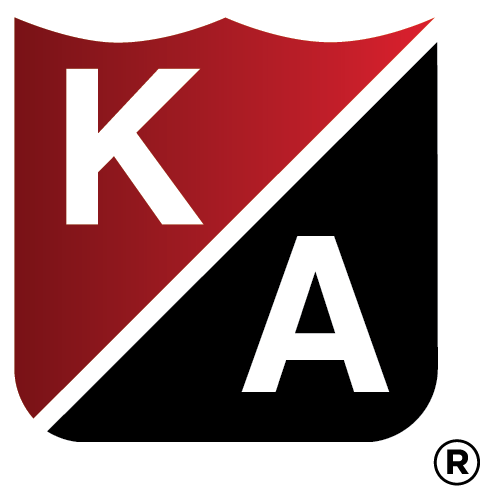As insurance products go, fiduciary liability insurance is not old—the first policies emerged in 1975, following the passage of the landmark legislation known as the Employee Retirement Income Security Act of 1974 (ERISA). This legislation became effective on January 1, 1975, with oversight and regulation falling under the US Department of Labor (DOL).
The need for comprehensive employee benefits reform was envisioned by New York Senator Jacob Javits, and after significant deliberation and modification of the original legislation, ERISA was signed into law by President Gerald R. Ford, on Labor Day, 1974. With only minor exceptions, ERISA applies to all employee benefit plans, but ERISA has been amended numerous times since its inception. Many of those amendments carry insurance implications. In fact, large numbers of both buyers and sellers of insurance coverages are unaware of the nuances of ERISA and its impact upon executives, particularly those who make internal employee benefit plan decisions.
Let’s explore the specifics, look at the implications and effects of the insurance coverages associated with ERISA, and review emerging trends in claims. Mandated Insurance Section 412 of the original ERISA legislation requires insurance coverage—the only place in the legislation which does so. The insurance required was originally stated as a “fidelity bond,” but in the roughly 45 years since ERISA was implemented, this term has taken on more contemporary meaning. Today it is easily interpreted as “employee dishonesty” or “employee theft” insurance coverage.
The original ERISA legislation also dictated a formula for computing the proper amount of this insurance coverage, as follows: 10% of the assets of each employee benefits plan (plus 10% of anticipated plan contributions for the coming plan year), subject to a maximum limit of insurance of $500,000, per plan. In the early 2000s, a $1,000 minimum limit of required insurance was inserted into the law, and in 2008, another insurance-related feature was adopted. This legislative addition stipulated a maximum limit of insurance if employer stock was an investment option for employees, or, if employer stock was used to match employee contributions. The newly established maximum employee dishonesty insurance limit was $1,000,000.
There was no requirement thatthis insurance should be in the form of a separate insurance policy, although some buyers of the insurance wish to keep the ERISA-required insurance separate from the organization’s commercial employee dishonesty insurance. If no separate policy is utilized, however, the ERISA-mandated insurance must be clearly designated, and cannot be compromised by a lower limit of commercial employee dishonesty insurance which may be in place.
Optional Insurance
Although employee dishonesty insurance is the only mandated insurance under ERISA, Section 410(a) places significant responsibility upon an organization’s employee benefit plan decision-makers by stating that persons with discretionary judgment authority for employee benefit plans are considered “personally liable.” Section 410(b) states that such persons may choose to purchase liability insurance to satisfy this “personal liability.” THIS is the insurance product we’ve come to know as fiduciary liability insurance.
Knowledgeable and concerned insurance professionals, as well as commercial risk managers, have come to appreciate this important insurance protection as a means of addressing the personal liability exposure issue. So, fiduciary liability insurance has emerged as the primary insurance product protecting executives for their personal liability under ERISA, although employee dishonesty insurance is the only insurance coverage actually mandated.
Confusion with Other Insurance Products
Students of insurance know there was another, somewhat similar insurance product that was available prior to the passage of ERISA: employee benefits liability insurance (EBL). By the early 1970s, it was recognized that human resources personnel were not infallible: mistakes could happen in handling employee benefit plans, such as those involving failure to enroll (or properly enroll) employees, misinterpreting employee benefits, and failure to make employee-requested changes in individual coverage aspects of employee benefit plans. The insurance product chosen to address these administrative mistakes was EBL insurance.
EBL was initially sold as a monoline insurance policy provided on a “claims-made” basis, with a modest limit of liability insurance and minimal underwriting of the exposures. Nowadays, EBL, which is still written on a “claims-made” basis, is often a “throw-in” on commercial general liability insurance policies. This frequently begs the technical insurance question: exactly how does it work when one has a “claims-made” coverage endorsed onto an “occurrence” liability insurance policy? This conundrum of coverage applicability is just too complex to fully explain in this short article, but serious students of claims-made insurance coverage might want to take the time to work through the coverage applicability of combining a claims-made coverage endorsed onto an occurrence policy form.
Almost always, EBL insurance is not underwritten, although an application is sometimes required for the underwriter’s file. The premium for EBL insurance is usually minimal, ranging from $200 to $500 annually. With very few exceptions, EBL insurance addresses “administrative mistakes” directly affecting designated employee benefit plans, and since EBL insurance actually pre-dated ERISA, the vast majority of EBL insurance specifically excludes liability under ERISA.
This means EBL should be considered neither a duplication nor a substitute for fiduciary liability insurance. But that’s where a major misunderstanding lies: many buyers and sellers of insurance believe that EBL and fiduciary liability insurance provide essentially the same protection!
Another insurance product sometimes confused with fiduciary liability insurance is the required employee dishonesty insurance. This confusion can be easily rectified, however, by realizing that there is no liability insurance in employee dishonesty coverage, and there is no employee dishonesty coverage in fiduciary liability insurance.
Fiduciary liability insurance is unique in providing protection for liability under ERISA. Even directors and officers liability insurance almost always excludes liability under ERISA (as do employment practices liability insurance and many professional liability insurance products).
Structure of Fiduciary Liability Insurance
Typically, a fiduciary liability insurance policy has two inseparable insuring agreements: 1) liability under ERISA and 2) coverage for administrative mistakes.
Defense expenses are included, and generally subject to the policy aggregate limit (some policies will provide for a stated maximum limit of defense expenses outside policy limits, however).
As important as the core coverage is, there are several potential extensions and/or enhancements of basic fiduciary liability insurance which provide unique protection for decision-making executives. These include the following:
1. Health Insurance Portability and Accountability Act (HIPAA) Civil Money Penalties.
HIPAA is the federal legislation which mandates no employment discrimination on the basis of medical or health-related conditions. Further, HIPAA requires employers to fully secure and protect employee health/medical records, or risk a fine. Thus, having insurance protection for HIPAA civil money penalties is important protection.
2. Settlement Program and Related Fees.
A Settlement Program is a voluntary compliance resolution program administered by the Internal Revenue Service or Department of Labor. Generally, this is a settlement negotiated by these regulatory bodies and the insured organization, which may or may not include regulatory fees, penalties, or sanctions.
3. Section 502(c), (i), and (l) Fines and Penalties.
There are various opportunities for the DOL to issue fines and penalties, including Section 502(c), (i), and (l). These fines are rare, but good fiduciary liability insurance will include coverage for fines and penalties under Section 502.
4. Affordable Care Act (“ACA”) Fines and Penalties.
With the advent of the ACA in 2010, both individuals and employers were required to have acceptable health insurance in place (a rigid set of guidelines was enacted to assure breadth and reasonable cost of coverage, as well as providing for fines for non-compliance). The individual mandate of the ACA was effectively eliminated with the passage of the Tax Reform Legislation of 2017, but the employer mandate remains in place for employers with 50 or more employees. It is important to have a specific coverage extension to address ACA fines/penalties.
Fiduciary Liability Exposures
There is little specific claims information relating to fiduciary liability claims paid, but we know that potential exposures include class-action suits relating to fees paid by employees [when it is not clear that employers are paying all fees associated with benefit plans, particularly, 401(k) plans and employee stock ownership plans (“ESOP”)]. In recent years, several prominent law firms have been known to solicit employee participation in class-action litigation aimed at employers and relating to administrative fees paid by employees.
Additionally, litigation is possible in connection with inadequate communication from employers regarding benefit plans. Also, allegations have emerged in connection with “denial of benefits” and “misleading representations” pertaining to employee benefit plans.
Misunderstanding Related to ERISA and Fiduciary Liability Insurance
Among other possible reasons for underutilization of fiduciary liability insurance are the following:
1. Confusion with other insurance coverages, such as EBL and employee dishonesty insurance;
2. Failure to understand the critical ERISA aspect of “personal liability;”
3. Asset sizes of employee benefit plans well beyond the limits of fiduciary liability insurance;
4. The belief that by outsourcing some facet of employee benefits administration to a third party, that the third party will have insurance coverage for the employer. Generally, while it is certainly possible to delegate some aspects of benefits administration to third parties, it is very difficult to delegate the responsibility placed upon decision-making executives of the organization; and,
5. The mistaken belief that there would be some coverage for governance-related decisions in D&O insurance.
Once the insurance seller has a solid working knowledge of fiduciary liability insurance, new production doors open and the possibility for strong insurance coverage emerges. Then, it’s just a matter of proper communication with the buyer to arrange effective fiduciary liability insurance!
By Richard (Dick) G. Clarke, CIC, CPCU, RPLU
About the Author:
Dick Clarke, a 48-year veteran of the property/liability industry, retired as Senior Vice President of J. Smith Lanier & Co., in 2016. Dick is the proprietor of Dick Clarke Insurance Answers, a consulting firm, as well as an Educational Consultant and National Alliance Faculty member who teaches a variety of advanced Ruble Graduate Seminar subjects and other courses. Dick is also the author of all six editions of Executive Liability Insurance, the most recent of which has been published and is available at NationalAllianceBooks.com. The post Fiduciary Liability Insurance: Under-loved and Under-utilized appeared first on The National Alliance for Insurance Education and Research. This article was reposted with the permission of the author.



